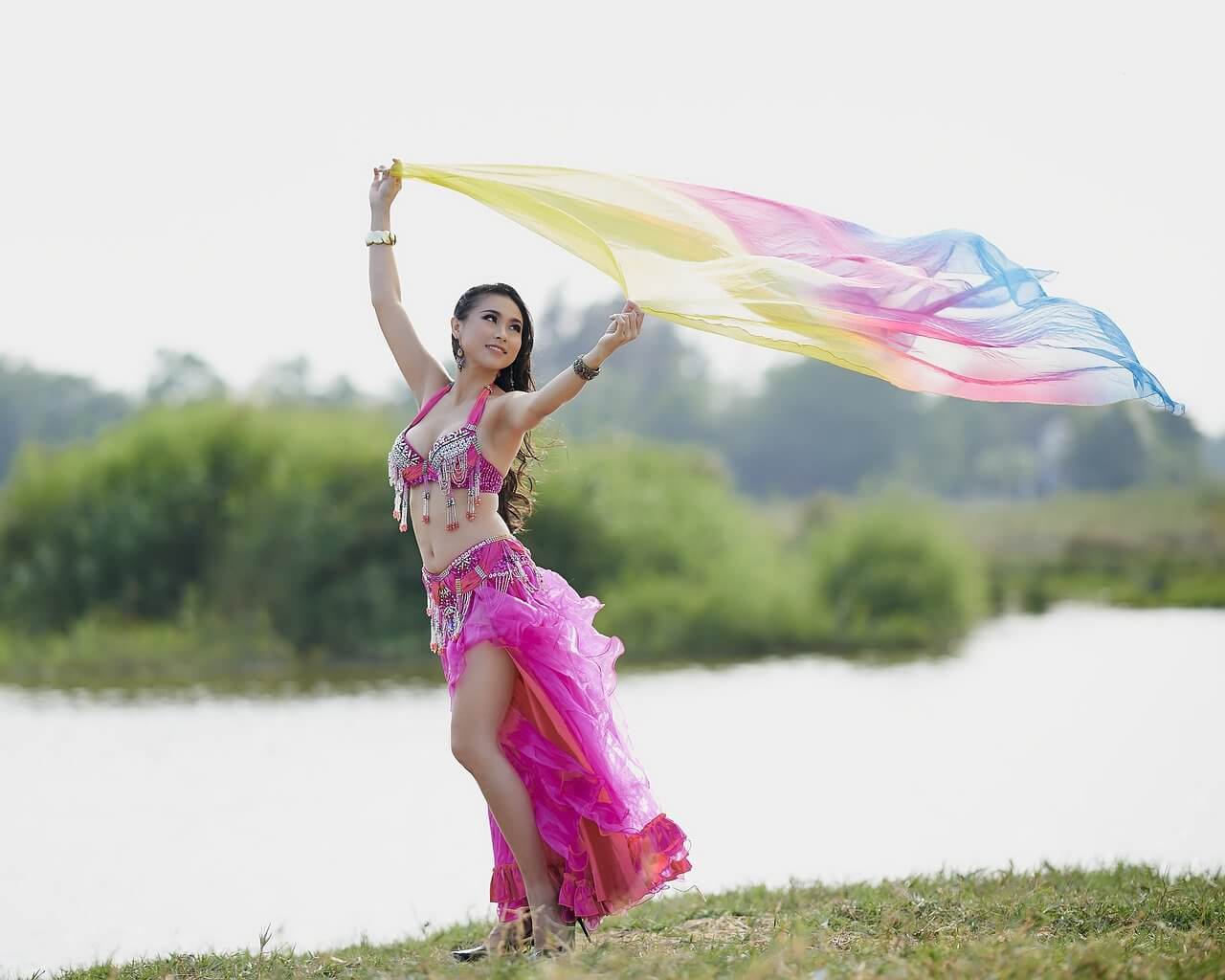
Once, I didn’t know much about belly dancing. I’d seen a few scenes in various movies featuring belly dancers, and I’d seen Shakira’s music videos from the early 2000s, and I was fascinated. I couldn’t quite put my finger on it, but something captivated me about that dance style. It really reached into my heart and called to me – something that quite a few women in the belly dancing scene have reported, as I found out later. I saw what those women could do with their bodies, and I thought I wanted to do that, too!
At the start, I had questions about the dance style. So many questions! If you’re just starting out taking your first few baby (dancing) steps in belly dancing, then you’ve probably got some of the same questions. I found the answers to my questions after a fair bit of research, trial and error, but to save you some of the hard work, I’ll give you the answers I’ve found.
Is Belly Dance The Real Name For This Style?
One of the first things that hit me was that although this dance style is Middle Eastern to the point of being stereotypical, the name we give it is in English. So, what was the original name? This turned out to be a bit of a tough question to answer, as this dance style has quite a long history and it’s danced in countries with different languages. However, what I found out pretty quickly was that the name “belly dance” was just a translation from the French term danse du ventre (or danse orientale), which was coined in the mid-1800s. However, the dance style is a lot older than that.
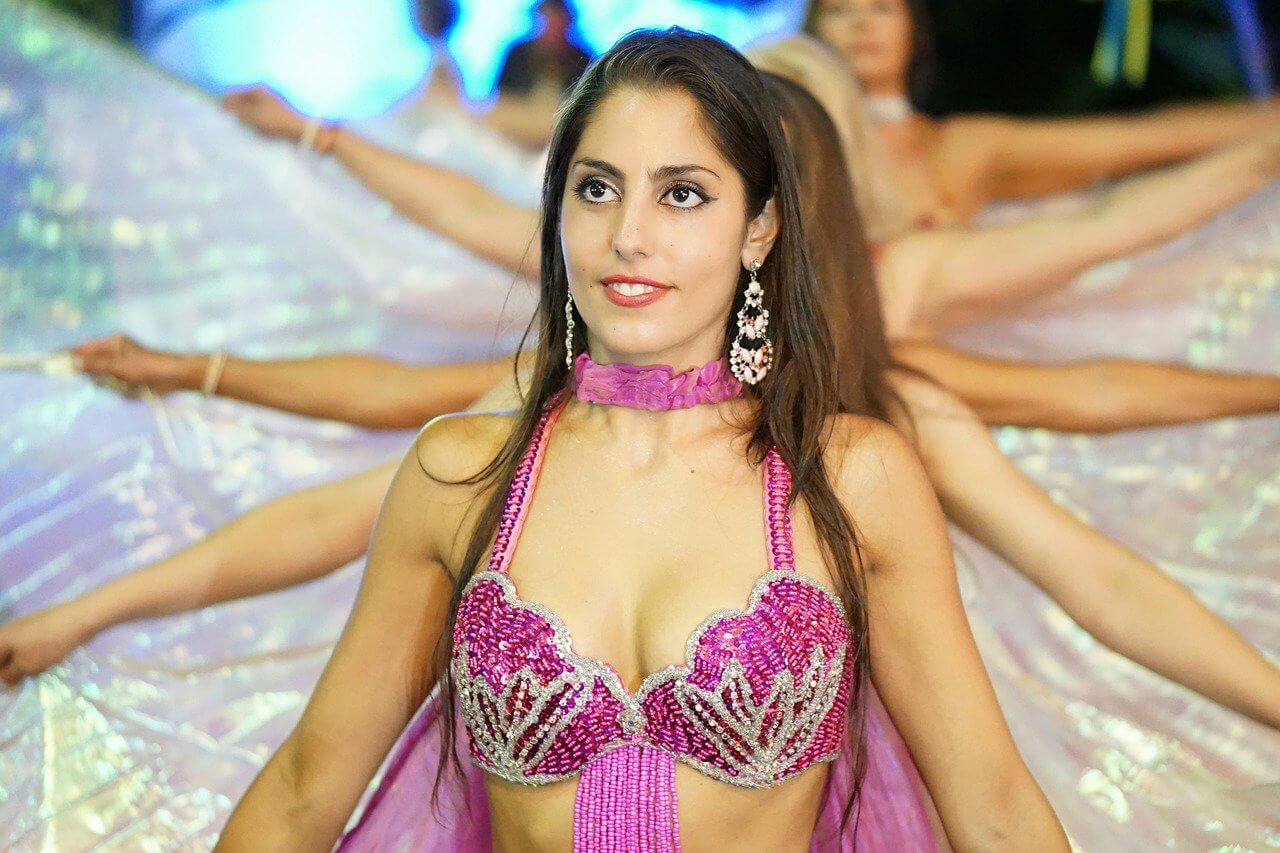
Another name for this dance style that better reflects its origins is Raqs Baladi. This is an Arabic term that can be more or less translated as “folk dance”, reflecting its rural origins. This is the preferred term for this dance in Egypt, which is one of the countries where this style is popular and celebrated. Another term is Raqs Sharqi, which is the Arabic for “eastern dance” or “oriental dance”. These Arabic terms are respectful and reflect the true origins – something that can’t be said about one of the other names for this dance style that was popular in the USA in the early 20th century, namely hoochie-coochie.
Where Did This Dance Style Come From Anyway?
This dance style is quintessentially Middle Eastern, although it’s been influenced by other cultures over the years (a bit from India here, a bit from Latin there, a bit from Loie Fuller’s modern dance, and even a bit from classical Western ballet). There’s a distinct possibility that what we know as belly dancing was practised in the earliest days of human civilisation in the Fertile Crescent. Certainly, two of the main centres of belly dancing today are Egypt and Turkey. The style of belly dance that you’ll see in a lot of classic Hollywood films is the Egyptian style of dance, and the Egyptian film industry had a strong influence on the way we view belly dance and belly dancing. The earliest written records that we have access to in the West describe belly dance as being characteristic of Egypt.
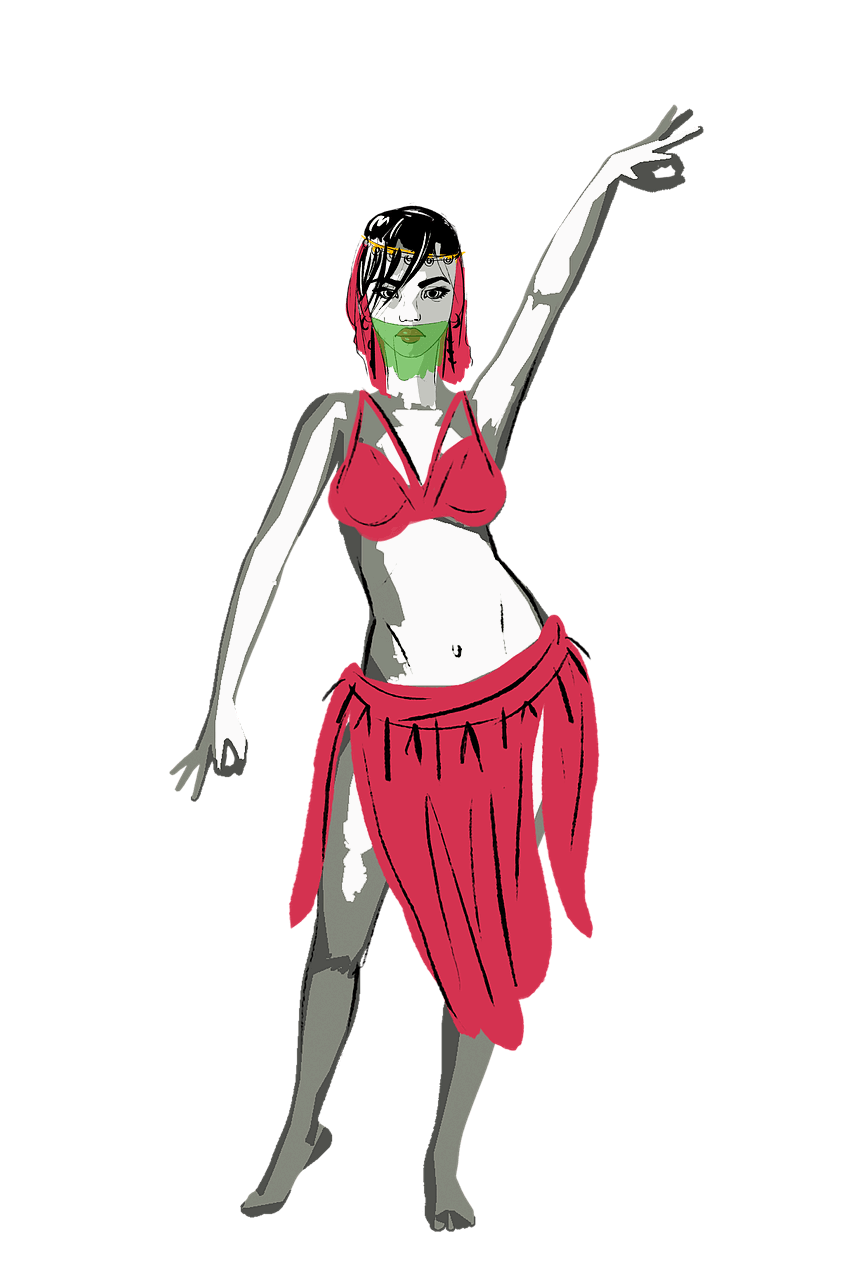
In fact, the history of belly dancing is long and complicated and probably deserves a post of its own.
Isn’t Belly Dancing A Bit Sleazy?
When I saw belly dancers for the first time, and as I explored this style more, I was struck by the beauty, the glamour and the essentially feminine energy of the style. That’s what captured me so much. However, belly dancing has picked up something of a sleazy, skanky image in both the West and the East, but it wasn’t always that way. The fact that in the early 20th century, belly dance was something found in burlesque shows and nightclubs, billed as hoochie-coochie didn’t help this. However, in its original setting, despite what some movies would suggest, belly dancing was considered family-friendly. A dancer traditionally performed at weddings in Egypt and the Levant (Israel and Palestine), and when a family celebration took place, somebody (or several somebodies) would dance in this style.

Once you start watching and dancing, you soon realise that there’s a subtle difference between belly dance and skanky, exploitative dance styles. It’s hard to put a finger on exactly what the difference is, but it’s definitely there. It’s as if belly dance says, “I am a woman. I am beautiful. My body is strong and supple as well as sexy,” but the sleazy sort of dances say, “Come and get it.” Belly dancing can be done for a woman’s own private enjoyment by, it can be used as an expression of spirituality, it can be enjoyed by groups of women having fun together, and yes, it can be sexy as well.
Will Belly Dancing Get Me Fit?
Belly dancing is great exercise! Because it’s focused on the torso and the pelvis, it works core muscles, along with your hip and thigh muscles. Add in some of the steps and some of the arm movements – and veil work – and your arms and the rest of your legs get a good workout. Because belly dance doesn’t involve heaps of jumping and leaping (it’s very grounded and earthy), it’s a low-impact exercise that’s easy on your knees, hips and ankles. A woman can do it if she’s pregnant – in fact, some experts suggest that some belly dance moves developed out of movements to help with giving birth. It’s good for flexibility and for cardio. It’s particularly good for your lower back, and it’s good for people of all ages. What’s more, because it’s a lot of fun, it’s likely to be something you keep coming back to.
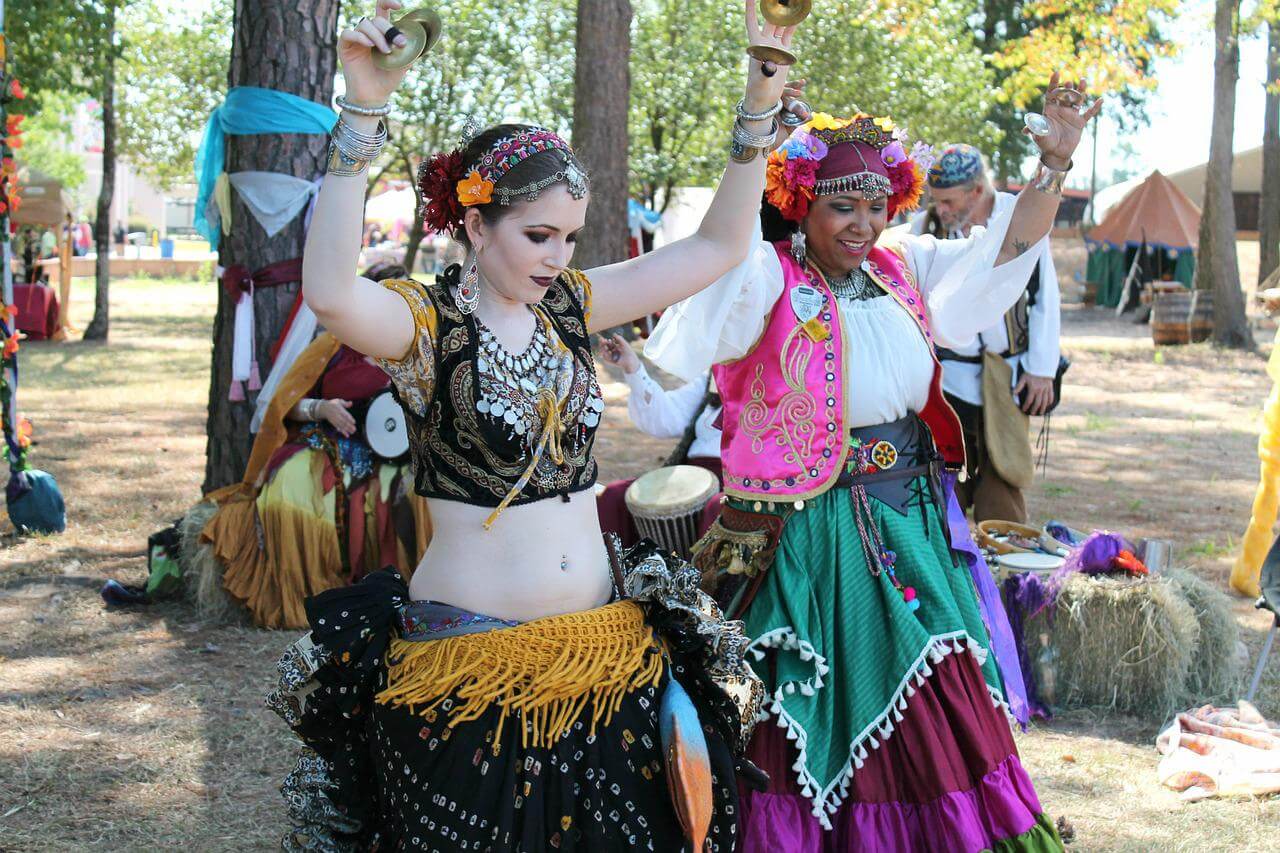
Do I Have To Be Concerned About Cultural Appropriation?
There’s always a fine line between appropriation and celebration. The golden rule is to be respectful of the culture where the dance style originated and to learn as much as you can. It’s important to respect the traditions and realise that if you’re European, it’s something you’ve borrowed. If you’re not actually Middle Eastern, don’t do a Mata Hari and claim to be “exotic” when you’re not. Avoid mockery and parody. But don’t be afraid of giving it a go, even if this dance style comes from a culture that isn’t yours. If it helps you learn about another culture and admire it, and if it helps you form a connection with another culture, then it’s a good thing.
However, there’s no need to drive yourself crazy trying to be as “authentic” and true to the original as you can, feeling like an impostor if you want to, say, blend a few Turkish-style moves with Egyptian dancing. Modern belly dancing is an evolving style, especially the Tribal Fusion style, which gleefully uses and celebrates elements of dance from around the world.
Do I Have To Wear All The Costumes?
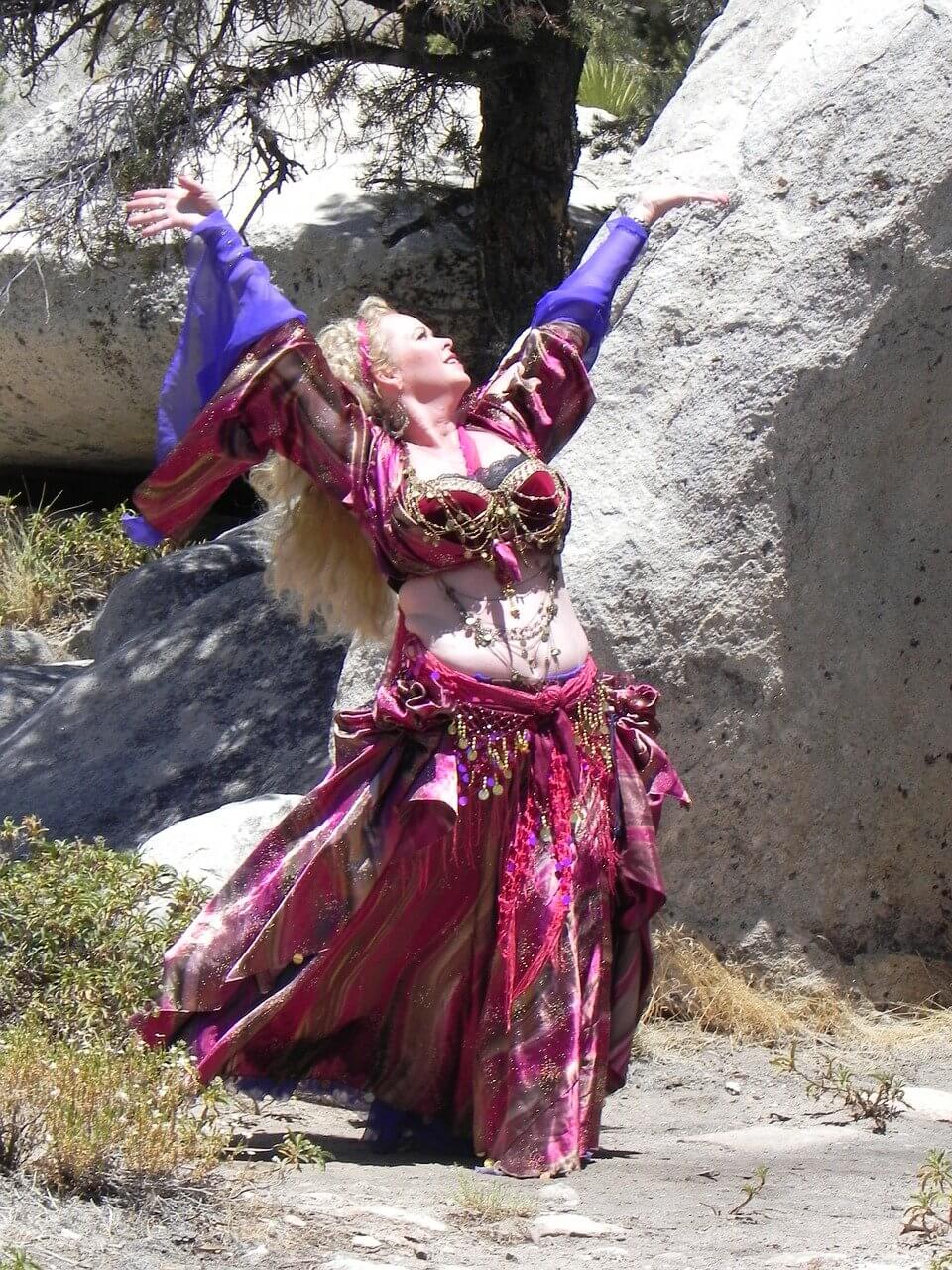
The costumes are a very fun part of belly dancing, but you don’t have to buy or make a belly dance costume to get started. If you’re trying it for the first time, then any suitable exercise clothing will be fine. After that, you can start playing with the coin belts, the swishy skirts, the harem pants, the veils… Be warned: it’s addictive!
Here is a belly dancing instructional video to get your creativity going:
